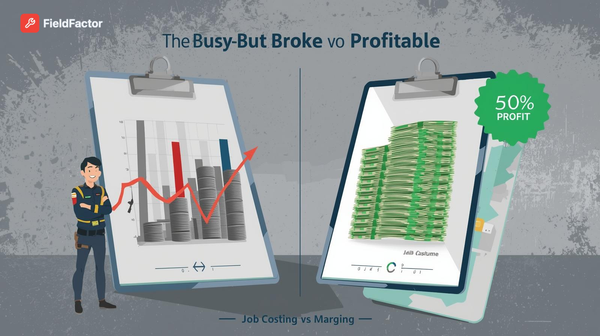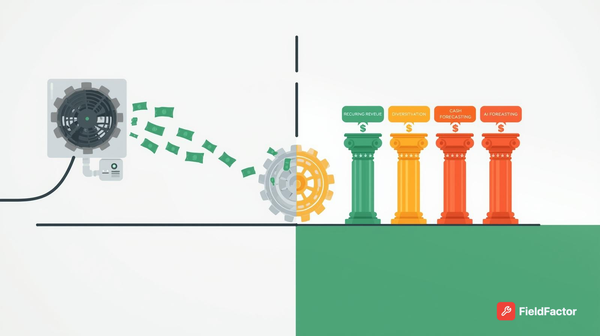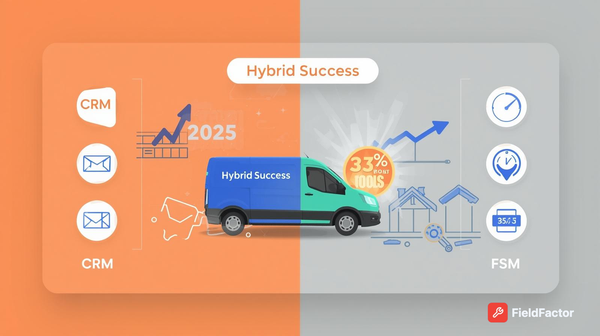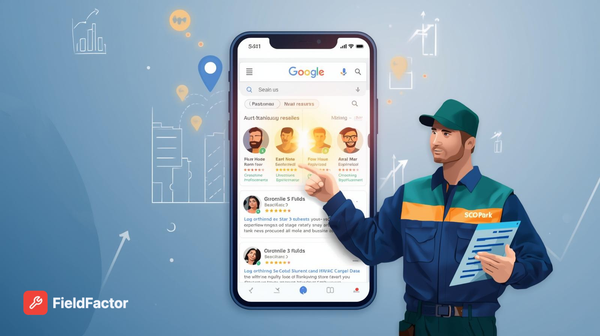How to Sell Your HVAC Company to Private Equity: The Ultimate 2025 Guide
Selling your HVAC business to Private Equity in 2025? Unlock 8x+ EBITDA multiples & 20-30% valuation boost. Get the ultimate guide to PE players and systemization for a winning exit.
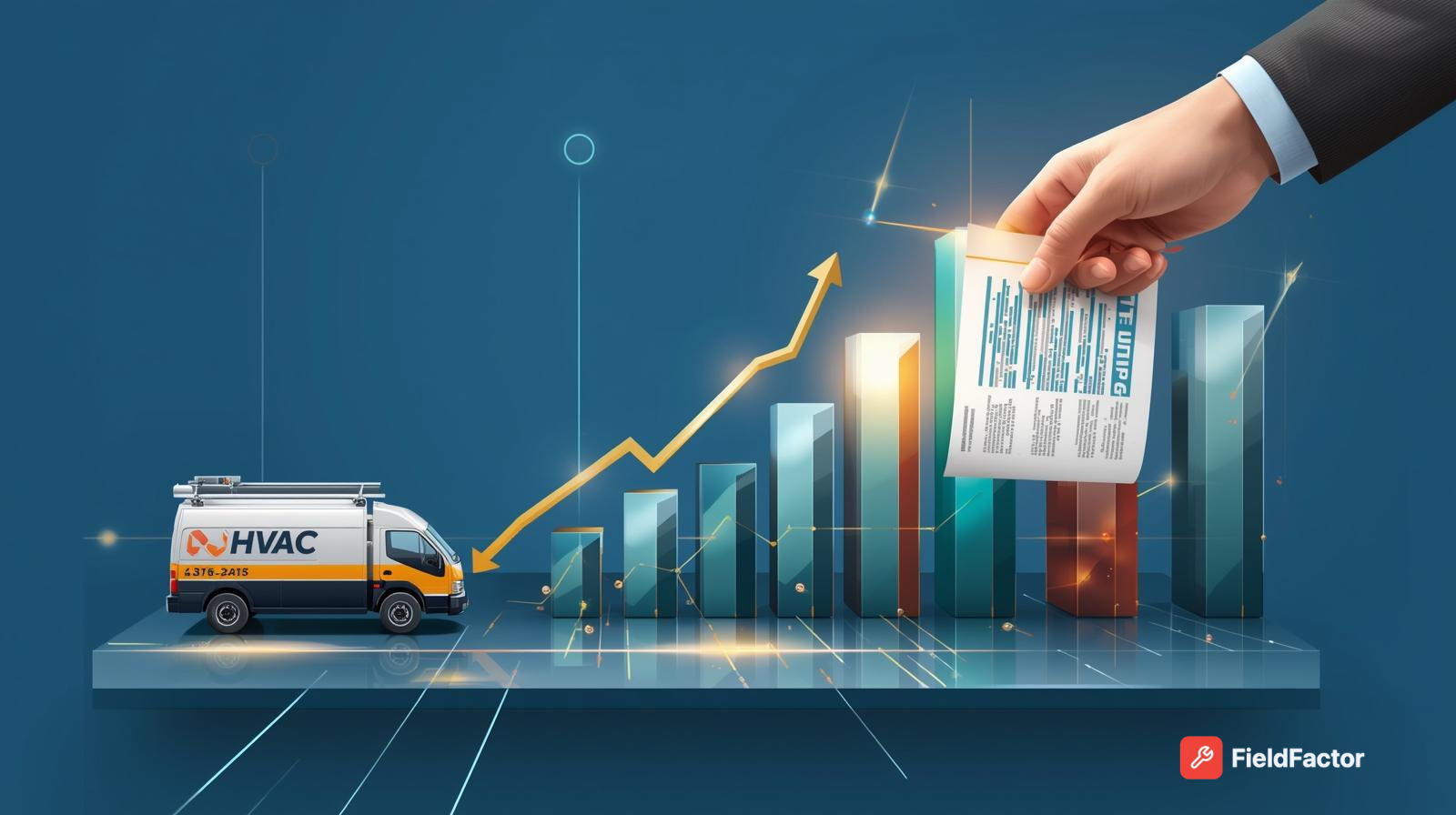
In the booming $216 billion global HVAC market—projected to hit $390 billion by 2033—private equity (PE) firms are aggressively consolidating fragmented players to build scalable platforms. If you're an HVAC business owner eyeing an exit, selling to PE isn't just a transaction; it's a strategic move to unlock liquidity, fuel growth, and secure your legacy. With 77 M&A deals announced or completed year-to-date in 2025 (up slightly from 2024) and PE add-on acquisitions spiking 88%, the timing couldn't be better. This comprehensive guide dives deep into the process, from identifying major players and target metrics to hyper-detailed systemization strategies that can boost your valuation by 20-30%. Whether you're a $5 million residential service shop or a $50 million commercial contractor, we'll equip you to command 8x+ EBITDA multiples and close a deal that plays to win.
Why Sell Your HVAC Business to Private Equity in 2025?
Private equity's surge into HVAC isn't hype—it's driven by the sector's recession-proof cash flows, low capital needs, and endless demand from climate extremes, data centers, and energy retrofits. PE firms see HVAC as a "roll-up goldmine": over 29,000 privately owned companies mean endless tuck-in opportunities for geographic density and cross-selling (e.g., bundling HVAC with plumbing).
For owners, the appeal is clear: PE offers 100% liquidity (or near it via rollovers), operational expertise to scale without your daily grind, and potential second bites at the apple through future exits. In 2024 alone, PE snapped up 138 deals, with residential services leading due to 15%+ EBITDA margins from maintenance contracts. But beware: not every shop is PE-ready. Unsystemized "mom-and-pop" operations with owner dependency fetch 3-4x multiples, while polished platforms command 10x+. This guide ensures you're in the latter camp.
The HVAC Market Landscape: Opportunities and Trends
The U.S. HVAC services market alone tops $50 billion, with fragmentation fueling PE's buy-and-build frenzy—think Apex Service Partners' 107 acquisitions to date. Key trends for 2025:
- Climate and Tech Boom: Extreme weather spikes residential demand (up 10-15% annually), while AI/data centers drive industrial HVAC growth (e.g., liquid cooling systems).
- Retrofits Over New Builds: PE favors renovation-focused firms (80%+ revenue from services/retrofits) for lower cyclical risk—new construction should cap at 20-30% of revenue.
- ESG and Efficiency: Firms with green retrofits snag subsidies and 20% higher multiples; expect PE to push decarbonization post-acquisition.
- M&A Momentum: 55 PE deals in 2024 (72% YoY increase), with services (residential/commercial) at 124 YTD deals, up 6.9%. Platforms start at $10M EBITDA, adding 10-30 tuck-ins over 3-5 years for 10x exits to strategics like Carrier.
Risks? Rising rates could trim multiples slightly, but easing inflation and $10B+ dry powder keep the fire lit.
Major Private Equity Players in HVAC Acquisitions
PE's HVAC obsession is led by firms with $1B-$300B AUM, focusing on roll-ups for 20-30% EBITDA lifts via tech and ops tweaks. Here's the top 10, ranked by 2024-2025 deal volume (from 138 total deals):
| Rank | Firm (AUM) | Strategy | Recent Deals (2025) | Target Revenue/EBITDA | Key Markets |
|---|---|---|---|---|---|
| 1 | Morgan Stanley Capital Partners ($10B+) | Aggressive tuck-ins for recurring maintenance; 25% post-deal EBITDA jumps via ops expertise. | 30+ add-ons building Sila (sold to Goldman for $1.7B in 2024). | Platforms: $10M+ EBITDA; Tuck-ins: $2-5M. | Northeast (residential/commercial). |
| 2 | Goldman Sachs Alternatives ($300B+) | Super-platforms blending HVAC/plumbing/electrical; AI scheduling for cross-sells. | $1.7B Sila buyout (30+ locations); Peaden expansions. | $20M+ revenue platforms. | Sunbelt (multi-region). |
| 3 | Partners Group ($150B) | ESG-focused retrofits for commercial/industrial; green subsidies. | 10+ add-ons (PremiStar/Air Temp); Dahme Mechanical (June), B.T. Lindsay. | $5-10M EBITDA. | Midwest (plumbing-HVAC synergy). |
| 4 | Alpine Investors ($18B) via Apex | People-first residential roll-ups; 20% tech pay hikes to cut turnover. | 20+ annual tuck-ins; Florida/Texas bolt-ons. | $50B market fragmentation; $3-7M EBITDA tuck-ins. | National (residential). |
| 5 | Audax Private Equity ($18B) | Industrial filtration/integration for data centers. | Air Filtration Co. (Jan); Rensa platform (10x growth target). | $5M+ revenue. | Industrial (filtration). |
| 6 | Genstar Capital ($33B) via SEER Group | Southwest desert maintenance; 15% supply chain cost cuts. | S&S Mechanical (May); 15+ add-ons. | $500M revenue target by 2027. | Southwest (commercial). |
| 7 | Trive Capital ($6B) via Cascade | Predictive analytics for multifamily; quick closes. | East Coast Mechanical (March); 8+ YTD. | $10M+ platforms. | East Coast (multifamily). |
| 8 | Huron Capital ($2.5B) via Exigent | Founder-operator Midwest mechanical; boiler-HVAC hybrids. | Premier Mechanical (Jan); $200M+ entity. | $5-10M EBITDA. | Midwest (industrial retrofits). |
| 9 | Astara Capital ($1B+) via Del-Air | Emergency revenue in hurricane zones; insurance contracts. | McGowan’s (Feb); 10+ Florida deals. | 30% YoY growth; $3-5M tuck-ins. | Southeast (residential emergency). |
| 10 | Gamut Capital ($1.5B) | Efficiency rebates for new construction. | Airtron + Sierra Air; 50 locations EOY target. | $5M+ revenue. | National (residential new builds). |
These firms prioritize platforms with 15%+ margins and recurring revenue >40%. Approach via M&A advisors for warm intros.
Target Markets and Regions PE Firms Are Eyeing
PE hunts density: Sunbelt (Texas, Florida, Georgia) for population booms and hurricanes (20%+ growth); Northeast/Midwest for commercial retrofits; Southwest for desert maintenance. Segments:
- Residential (40% of deals): Maintenance-heavy; highest margins (15-20% EBITDA).
- Commercial (30%): Multifamily/data centers; vulnerable to econ dips but premium rates.
- Industrial (30%): Semiconductors/healthcare; 10-15% annual growth via tech demand.
Avoid over-reliance on new construction—PE wants 70%+ service/retrofit revenue for stability.
Ideal Revenue Size and Company Profile for PE Buyers
PE platforms start at $10M+ revenue ($3M+ EBITDA) for scale, but tuck-ins as low as $1M revenue ($500K EBITDA) fit if systemized. Ideal profile: $5-50M revenue, 40%+ recurring from contracts, diversified customers (no single >15%), 20+ technicians, and tech stack (e.g., ServiceTitan CRM). Smaller shops (<$5M EBITDA) go for 2-3x; larger hit 7x+. 158 HVAC firms currently seeking buyers average $2B combined revenue ($1M-$110M range).
Key Metrics and Factors PE Firms Evaluate
PE scrutinizes for scalability and risk. Core metrics:
- EBITDA Multiples (Q1 2025 Averages): Overall 8x; residential all-purpose: 6.3x ($500K-1M) to 10.8x ($5-10M).
| EBITDA Range | Residential (All-Purpose) | Commercial (All-Purpose) | Industrial (All-Purpose) |
|---|---|---|---|
| $500K-1M | 6.3x | 5.2x | 5.6x |
| $1-5M | 9.2x | 7.4x | 8x |
| $5-10M | 10.8x | 9.2x | 9.3x |
- SDE Multiples: 5.1x average; residential: 5.7x-7.9x.
- Other KPIs: 70-86% COGS (14-30% gross margins); >80% contract renewal; <10% customer churn; 20%+ YoY growth; low owner salary add-back (for clean EBITDA). Tech integration (e.g., predictive maintenance) adds 1-2x.
Valuation methods: Comps (recent deals), DCF (future cash flows, seasonal-adjusted), precedents (e.g., Sila at 10x).
Deep Dive: Systemizing Your HVAC Business for Maximum Valuation
Systemization isn't optional—it's your valuation multiplier. PE demands a "lights-out" operation: replicable, owner-agnostic, with SOPs proving scalability. Unsystemized firms drop 2-3x on multiples due to key-person risk; systematized ones fetch 25%+ premiums. Here's a super-deep blueprint, phased over 6-18 months.
Phase 1: Audit and Baseline (Months 1-3)
- Financial Systemization: Switch to accrual accounting for true value (vs. cash basis hiding seasonality). Track job costing granularly: labor (40-50% of revenue), materials (25-30%), overhead (10-15%). Audit 3-5 years' P&Ls/tax returns; normalize add-backs (e.g., owner perks ≤20% of EBITDA). Goal: 15%+ clean EBITDA.
- Revenue Audit: Quantify recurring vs. one-off: Aim for 40%+ from maintenance (e.g., $500/year contracts). Diversify: <15% from any client; 50/50 residential/commercial. Use CRM to track churn (<10%) and LTV (e.g., $5K/customer over 5 years).
- Ops Baseline: Map workflows via process mining tools (e.g., Lucidchart). Identify bottlenecks: e.g., 20% dispatch delays from manual scheduling.
Phase 2: Build Core SOPs and Infrastructure (Months 4-9)
- Documented SOPs (The Backbone): Create 50+ manuals covering every touchpoint. Examples:
- Service Delivery: 12-step install checklist (site survey → permitting → testing); fault-tree diagnostics for repairs (e.g., "If compressor fails, check X before Y").
- Maintenance Contracts: Automated renewal workflows (90-day alerts via HubSpot); upsell scripts for 20% attachment rate (e.g., air quality add-ons).
- Emergency Response: 24/7 triage protocol (prioritize by SLA: commercial <2hrs); post-job NPS surveys (>4.5/5 threshold).
- Inventory/Procurement: Just-in-time ordering via ERP (e.g., Fishbowl); vendor scorecards (cost, reliability >95%).
Depth: Each SOP includes inputs/outputs, KPIs (e.g., 98% on-time completion), training modules (video + quiz), and audit checklists. Version control via Google Workspace; train via 4-week onboarding.
- Tech Stack Overhaul: Integrate ServiceTitan/Housecall Pro for dispatching (reduce no-shows 30%); QuickBooks for real-time P&L; predictive analytics (e.g., AI for part failures, cutting downtime 25%). Budget: $50K initial, ROI in 6 months via 15% efficiency gains.
- Fleet/Vehicle Systemization: GPS telematics (e.g., Samsara) for routing (save 20% fuel); preventive maintenance schedules (e.g., quarterly inspections) to hit 95% uptime.
Phase 3: Team and Culture Alignment (Months 10-12)
- Management Decentralization: Promote 3-5 mid-level leads (e.g., ops director with $150K comp); cross-train techs (e.g., 80% certified in heat pumps). Succession plan: Shadow owner for 90 days, then solo ops for 30.
- Talent Pipeline: Retention via 20% pay hikes for certified techs; apprenticeship programs (partner with ACCA). Metrics: <15% turnover; 25% internal promotions.
- Culture Codification: Values playbook (e.g., "Customer-first, no shortcuts"); quarterly town halls. PE loves low-drama teams—aim for Glassdoor 4.5+.
Phase 4: Validation and Stress-Test (Months 13-18)
- Mock Due Diligence: Hire advisor for red-team audit; simulate buyer Q&A (e.g., "Prove ops without owner"). Fix gaps: e.g., if contracts <80% renewal, launch loyalty program.
- Scalability Proof: Pilot expansion (e.g., new van in adjacent zip); track KPIs (e.g., 15% revenue lift). Document everything in CIM (Confidential Information Memorandum).
- Risk Mitigation: Legal audit (licenses, insurance); compliance SOPs (e.g., EPA refrigerant handling). Diversify suppliers (<20% from one).
Result? A "PE-ready" business: 30% valuation uplift, smoother diligence (close in 90 days vs. 180). Tools like EOS (Entrepreneurial Operating System) or ScaleUp can accelerate—many PE firms reference them post-deal.
Step-by-Step Guide to Preparing and Executing the Sale
- Self-Assess (1-2 Months): Valuation via comps/DCF; hire M&A advisor (e.g., Axial network for 10x buyer intros).
- Systemize (6-12 Months): As above; build teaser/CIM highlighting metrics.
- Market (1 Month): Advisor pitches 50+ buyers; aim for 18 LOIs.
- Negotiate (1-2 Months): Competitive bids; protect vs. earnouts (cap at 20% of price).
- Due Diligence/Close (2-3 Months): Provide data room; wire funds.
Total timeline: 9-18 months; advisor fees: 1-5% of proceeds.
Pros and Cons of Selling to PE
| Pros | Cons |
|---|---|
| Liquidity + growth capital (e.g., 100% cash-out). | Complex structures (earnouts tie 20-30% to post-sale performance). |
| Ops expertise (e.g., 20% EBITDA boost via tech). | Cultural shifts (metrics-driven, potential turnover). |
| Second exit potential (3-7 years). | Shorter horizon vs. strategic buyers. |
Common Pitfalls and How to Avoid Them
- Pitfall: Owner Dependency: 52% of listings fail here. Fix: 6-month handover test.
- Seasonal Skew: Mild winters tank Q1 numbers. Fix: Normalize in CIM.
- Undervalued Recurring Revenue: Undocumented contracts ignored. Fix: CRM-tracked portfolio.
- No Advisor: DIY closes 25% lower. Fix: HVAC-specialist for 75% success rate.
Conclusion: Your Path to a Winning Exit
Selling your HVAC company to PE in 2025 means capitalizing on a $390B wave— but only if you're systemized, metric-sharp, and strategically positioned. Start with a valuation audit today; partner with pros to target firms like Morgan Stanley or Alpine. Done right, you'll exit richer, relieved, and proud—leaving a scaled legacy. Ready to roll up? Consult an advisor and let's make it happen. For personalized insights, drop a comment below.
Keywords: sell HVAC company to private equity, HVAC PE acquisition 2025, systemize HVAC business for sale, HVAC valuation multiples.


